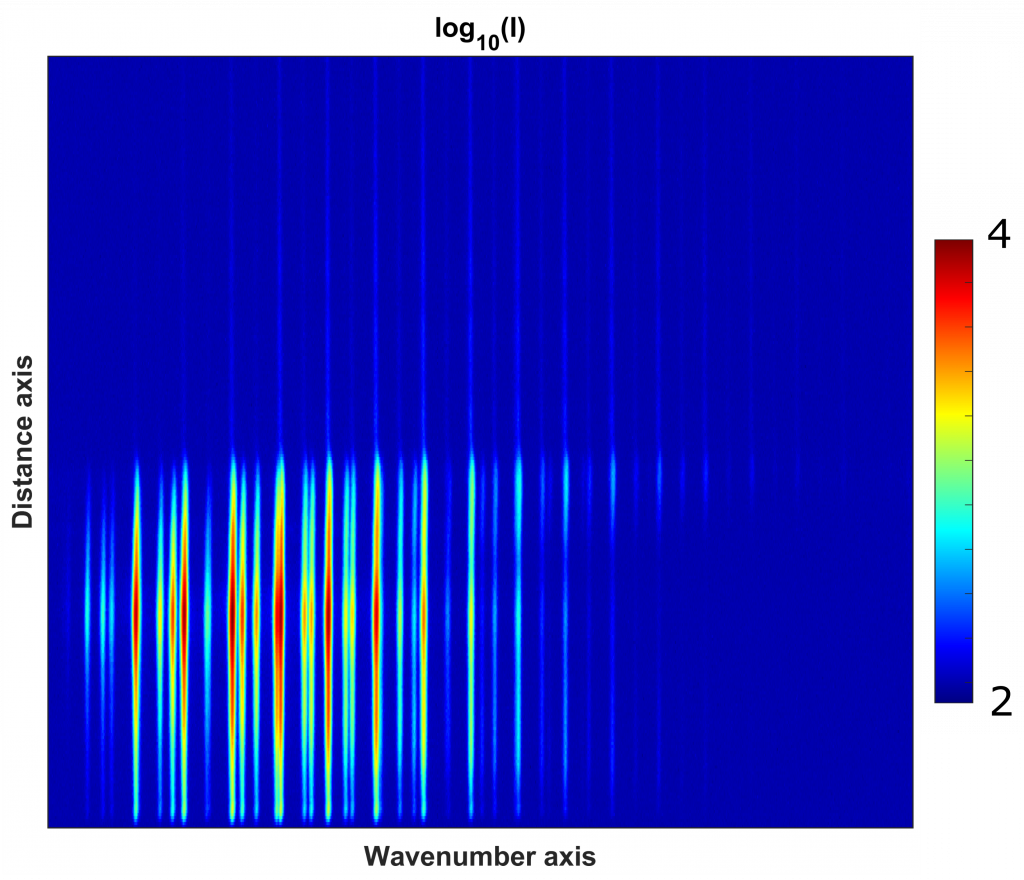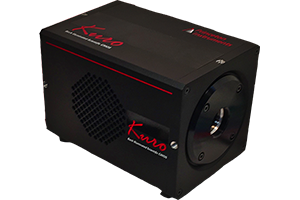Dr. Brian Peterson, Dr. David Escofet-Martin
University of Edinburgh
Background
Dr. Brian Petersons lab at University of Edinburgh investigates the fluid dynamics and heat transfer in combustion gases with laser based analysis methods and spectroscopy. Combustion chamber like a car engine have steep temperature gradients between the cold walls at 300-400k and burning gas at temperatures of several thousand Kelvin. Problems arise as engines become smaller, increasing the surface to gas interactions and heat flux and reducing combustion efficiency and clean burning of fuel.
Dr. David Escofet-Martin, a research associate in the group, works on coherent anti-Stokes Raman spectroscopy (CARS) experiments aimed at quantitative measurements and understanding these heat flux processes. CARS measurements are a powerful tool for studying combustion processes. CARS spectra contain information of temperature, pressure as well as quantities of burned and unburned fuels and quantity ratio of different molecular species for example mole ratios of nitrogen and oxygen. The monitoring of all these parameters in a single measurement facilitates fast measurements of the dynamic processes in the combustion region.
The CARS measurement setup in the Peterson lab uses a 35fs pump beam from a Ti:Sapphire Laser at 800nm and up to two 20ps probe beams from a Nd:YAG laser where the time delay of each probe beam can be adjusted. Pump and probe beams pass through cylindrical lenses to create lightsheets that are overlapped in the experiment chamber, so all points along the line where sheets cross are probed simultaneously.
The probing light sheets are directed towards the entrance slit of a spectrograph and are physically separated along the slit axis. After dispersion, spectral images of each signal are detected on the camera. The images contain spectral information (dispersion along the x-axis), spatial information (y-axis) as well as temporal information (two spectral images on the top and bottom regions of the sensor, probe beams with different time delays).

Challenge
The detector for the CARS measurements has to be large enough to not only cover the spectral bandwidth of the experiment, but also the spatial information along the perpendicular axis. The CARS experiments in the Peterson lab typically use frame rates at 50fps or more, so the camera has to be fast enough to read images at this rate.
Another complication is related to the strong change in signal intensity. Due to the temperature gradient, rotational CARS signals cover a large dynamic range of several orders of magnitude. EMCCD cameras have sufficient frame rates, but dynamic range is significantly reduced when gain is applied to amplify small signals above the read noise of the camera.
“With KURO we can perform sensitive multidimensional CARS measurements of combustion gases at high frame rate with higher dynamic range compared to EMCCD cameras”
Solution
To overcome these challenges the Peterson lab setup uses a Princeton Instruments KURO 1200B back-illuminated sCMOS camera mounted on Princeton Instruments SP2750 spectrometer with 750mm focal length.
The large sensor with 1200×1200 pixel sensor allows for detection of the required spectral and spatial range for multidimensional CARS measurements.
The KURO has >95% quantum efficiencies similar to sensitive EMCCD cameras and low read noise, ideal for detection of small signals. The dynamic range however is significantly higher compared to their CCD counterparts. The fast readout of the KURO achieves frame rates of 41fps (or more when not using the full sensor height) at 16bit resolution.
The camera achieves frame rates of 41fps frame rates while having ultra low readout noise without application of gain. ideal for the high dynamic range of CARS spectra in combustion. At the same time the read noise is significantly below the level of CCDs increasing the sensitivity for weak signals.
Overall the KURO camera significantly improved the dynamic range compared to EMCCD cameras that the lab used before. This allowed group to improve the data quality of multidimensional CARS measurements.

